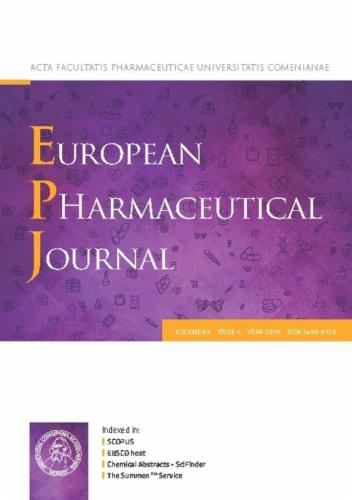EudraVigilance报告的抗癫痫药物疑似不良反应的性别差异
IF 4.3
3区 医学
Q1 PHARMACOLOGY & PHARMACY
引用次数: 0
摘要
癫痫是最常见的神经系统疾病之一,需要抗癫痫药物(ASM)长期治疗,这可能导致药物不良反应(adr)。我们的目的是通过研究asm的严重程度、结局和癫痫猝死(SUDEP),探讨asm疑似不良反应(sADRs)报告的潜在性别差异。方法利用EudraVigilance数据库,提取10年间不同asm的sadr报告。asm按解剖治疗化学分类系统编制。计算报告优势比(ROR)、95%置信区间(95% CI)、p值。结果总体上sadr以女性为主(603,936例,占57.46%)。男性与以下严重程度标准呈正相关:“危及生命”(ROR=1.02, 95% CI: 1.01-1.04;p & lt;0.001),“导致/延长住院时间”(ROR=1.06, 95% CI: 1.05-1.07;p & lt;0.001),“导致死亡”(ROR=1.44, 95% CI: 1.43-1.46;p & lt;0.001)和“先天性异常”(ROR=2.43, 95% CI: 2.41-2.45;p & lt;0.001)。只有“未恢复/未解决”的结果标准与男性呈负相关(ROR=0.72, 95% CI: 0.70-0.73;p & lt;0.001),其他结果标准在以下方面显示正相关:“致命”(ROR=1.43, 95% CI: 1.41-1.45;p & lt;0.001),“恢复/解决”(ROR=1.08, 95% CI: 1.07-1.09;p & lt;0.001),“恢复/消退伴后遗症”(ROR=1.06, 95% CI: 1.01-1.12;p & lt;0.001)和“恢复/解决”(ROR=1.14, 95% CI: 1.12-1.15;p & lt;0.001)。结论男性和女性之间存在差异,特别是在严重程度标准、预后较差但容易恢复以及与SUDEP对男性不利的关联方面。当为患者选择ASM时,特别是如果患者以前经历过药物不良反应。这些方面也可以考虑,而且可能是重要的。本文章由计算机程序翻译,如有差异,请以英文原文为准。

Sex differences in suspected adverse drug reactions of anti-seizure medications reported in EudraVigilance
Introduction
Epilepsy is one of the most common neurological disorders and requires long-term treatment with anti-seizure medication (ASM) which may cause adverse drug reactions (ADRs). Our aims were to investigate potential sex differences in reporting suspected ADR (sADRs) of ASMs through studying their seriousness, outcomes and Sudden Unexpected Death in Epilepsy (SUDEP).
Methods
Using EudraVigilance database, reported sADRs with different ASMs over a ten year period were extracted. List of ASMs was compiled according to Anatomical Therapeutic Chemical Classification System. Reporting Odds Ratio (ROR), 95 % confidence interval (95 % CI), p-value were calculated.
Results
In general, more sADRs were reported from females (603,936, 57.46 %). Males showed positive association with the following seriousness criteria: ‘life threatening’ (ROR=1.02, 95 %CI: 1.01–1.04; p < 0.001), ‘caused/prolonged hospitalisation’ (ROR=1.06, 95 %CI: 1.05–1.07; p < 0.001), ‘results in death’ (ROR=1.44, 95 %CI: 1.43–1.46; p < 0.001), and ‘congenital anomaly’ (ROR=2.43, 95 %CI: 2.41–2.45; p < 0.001). Only with ‘not recovered / not resolved’ outcome criteria showed negative association in males (ROR=0.72, 95 %CI: 0.70–0.73; p < 0.001), the other outcome criteria demonstrated positive association in the followings: ‘fatal’ (ROR=1.43, 95 %CI: 1.41–1.45; p < 0.001), ‘recovered / resolved’ (ROR=1.08, 95 %CI: 1.07–1.09; p < 0.001), ‘recovered / resolved with sequelae’ (ROR=1.06, 95 %CI: 1.01–1.12; p < 0.001), and ‘recovering / resolving’ (ROR=1.14, 95 %CI: 1.12–1.15; p < 0.001).
Conclusion
Differences were observed between males and females, particularly in terms of seriousness criteria, worse outcomes but prone to recover, and associations with SUDEP to the detriment of males. When choosing an ASM for a patient or especially if the patient has previously experienced an adverse drug reaction. these aspects can also be taken into account and may be important.
求助全文
通过发布文献求助,成功后即可免费获取论文全文。
去求助
来源期刊
CiteScore
9.60
自引率
2.20%
发文量
248
审稿时长
50 days
期刊介绍:
The journal publishes research articles, review articles and scientific commentaries on all aspects of the pharmaceutical sciences with emphasis on conceptual novelty and scientific quality. The Editors welcome articles in this multidisciplinary field, with a focus on topics relevant for drug discovery and development.
More specifically, the Journal publishes reports on medicinal chemistry, pharmacology, drug absorption and metabolism, pharmacokinetics and pharmacodynamics, pharmaceutical and biomedical analysis, drug delivery (including gene delivery), drug targeting, pharmaceutical technology, pharmaceutical biotechnology and clinical drug evaluation. The journal will typically not give priority to manuscripts focusing primarily on organic synthesis, natural products, adaptation of analytical approaches, or discussions pertaining to drug policy making.
Scientific commentaries and review articles are generally by invitation only or by consent of the Editors. Proceedings of scientific meetings may be published as special issues or supplements to the Journal.

 求助内容:
求助内容: 应助结果提醒方式:
应助结果提醒方式:


